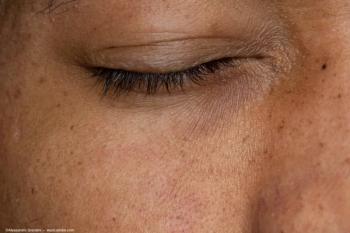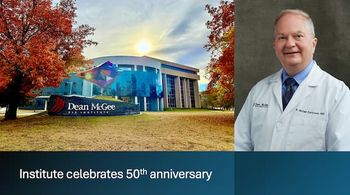
Exploring the future of AI in ophthalmology with Mark Daly
Key Takeaways
- LumineticsCore exemplifies AI's role in addressing patient access and reducing physician workload in ophthalmology.
- AI models improve diagnostic consistency and availability, enabling early detection and disease progression prediction.
Mark Daly discusses the transformative role of AI in ophthalmology, highlighting its potential to enhance patient care and streamline physician workflows.
Mark Daly, the Chief Technology Officer at Digital Diagnostics, spoke alongside other experts during a session at the Association for Research in Vision and Ophthalmology (ARVO) annual meeting, which was held in Salt Lake City, Utah. The session was titled, “AI regulation and implementation in ophthalmology” and took place on Tuesday, May 6, from 8:30-10:15 AM.
Following the meeting, Ophthalmology Times connected with Daly to discuss the use of AI (artificial intelligence) in the field of ophthalmology and what the future might hold for its increasing role in medical care.
Note: The following conversation has been lightly edited for clarity.
Ophthalmology Times: Can you summarize the key takeaway from your presentation at ARVO on the use of AI in ophthalmology?
Mark Daly: The key takeaway is that AI is successfully being used today as evidenced by LumineticsCore, a breakthrough-designated AI software device to go all the way from FDA clearance through reimbursement by Medicare, Medicaid, and major payors. The reason LumineticsCore has been a successful device is that it was designed to meet an existing need in the ophthalmology space, namely, lack of access for patients and overburdened physicians.
The entire product and process is developed around a bioethical framework that contemplates the complexities of patient engagement, regulatory considerations, ethics, economics, etc., as foundational considerations that need to be addressed in order to bring a product to market that is not only safe and effective, but also ethically founded and trustworthy. Understanding the important details of quantifying performance and physician variability in interpreting images was an important technical consideration in the regulatory pathway. As regulators work to address the rapid pace of technical innovation, innovators and regulators will need to prioritize working together to find clear pathways to bring products to market (eg, clearer pathways and consensus reference standards).
OT: What are the challenges can AI solve for ophthalmologists?
Daly: One challenge we’ve heard from ophthalmologists is the time it takes to review images for high-volume screening programs. After seeing patients in clinic all day and dealing with a thousand inbox messages, it’s not fun to close out your day sorting through a few hundred DR screenings to meet service commitments. Using LumineticsCore to help address this can not only improve patient satisfaction with point-of-care results but also reduce physician burden.
On the other side, the biggest challenge for patients is often getting access to the right care. Most LumineticsCore patients today are seen in the primary care setting and are referred to an ophthalmologist if they receive a diagnostic result that shows disease. That means the LumineticsCore AI solution is helping direct patients who would normally not be tested into an appointment with an ophthalmologist. For many of our patients, this might be the first time they have ever visited an ophthalmologist and it’s a great opportunity for connection and education.
OT: When we consider the future of AI in diagnostics, how might these tools help with the early detection of conditions?
Daly: Today’s diagnostic imaging tests are designed to detect specific conditions in certain populations, and AI models are being developed to substitute for human image interpretation of those diagnostic images. These models can improve consistency and availability (the software doesn’t get tired and is not limited by geography), while they are largely a direct replacement for human interpretation. What’s exciting for us is that as we start to collect data at scale on larger populations, we can begin to train models using de-identified, longitudinal records (monitoring the same patient over time) to start identifying conditions not only much earlier than we can today, but also potentially predicting the timeline for disease progression, which can be particularly important when planning interventions for conditions like AMD or DME.
The potential for early screening of neurological conditions like Alzheimer disease is another exciting development that folks are publishing on, and we are actively researching this alongside several other conditions that retinal imaging has been demonstrated to enable, opening new avenues for future product opportunities.
OT: What regulations might be coming down the line for the use of AI in ophthalmology or the medical field in general?
Daly: The regulatory environment is dynamic around the globe as regulators react to new AI technology, particularly with a new administration in the US making significant changes in FDA strategy and goals. Industry consensus seems to be that existing frameworks cannot keep pace with the rapid rate of change in technology, and we’ve already seen changes and proposals, both from FDA and international groups, to start addressing some of these changes (e.g. South Korea’s MFDS recently announced guidance for devices that use LLM and LMM technology). I expect that the market pull to diffuse the innovation will push regulators to provide better pathways globally, as everyone recognizes the potential impact even if we haven’t yet agreed on the regulatory nuances of how to safely deploy the technology at scale.
OT: In your opinion, what should ophthalmologists do today to implement AI tools into their practice?
Daly: Most importantly, collaborate with your clinical partners: foster relationships with endocrinology, primary care, and other care settings that send you referrals – understand how you can support larger system reporting and quality initiatives as a valuable contributor with a unique quality metric. Outside of ophthalmology or cardiology, no one is being reimbursed for deploying AI in healthcare, which means AI reimbursement is a unique opportunity to highlight when collaborating.
Another great strategy is to look at other systems that have had successful AI deployments and understand how they planned and who they partnered with. Projects can get derailed when missing an integral IT or clinical champion, so identify your supporters early in the process. Partnering with strong technologists who understand both the workflow and data integration is essential. For example, having a certified imaging informaticist on your team is almost required to guarantee a successful technology program deployment.
OT: Are there any areas of ophthalmology that you feel should not be using AI tools?
Daly: There are many great opportunities for AI tools to improve the patient experience, increase quality, and improve the availability of care. We continue to see new innovations almost daily in every element of the healthcare journey, from scheduling appointments all the way through to understanding exam results, education about treatment, and everything in between.
I think the best value for everyone comes when you deploy automation to address major existing gaps in access to care, provided the technology being used has followed the right processes and generated the evidence to prove safety, efficacy, and cybersecurity. The biggest risks I’ve seen in this space are folks not properly monitoring a system that has been deployed for consistent performance and not properly planning the workflow and integration aspects of a successful deployment.
Newsletter
Don’t miss out—get Ophthalmology Times updates on the latest clinical advancements and expert interviews, straight to your inbox.


















































.png)


